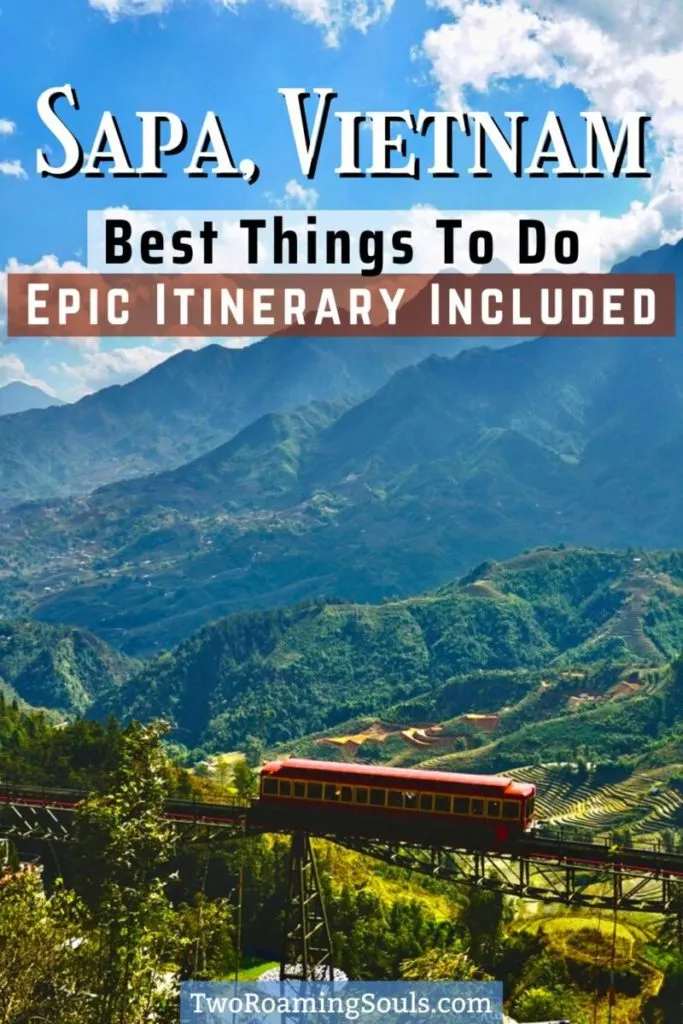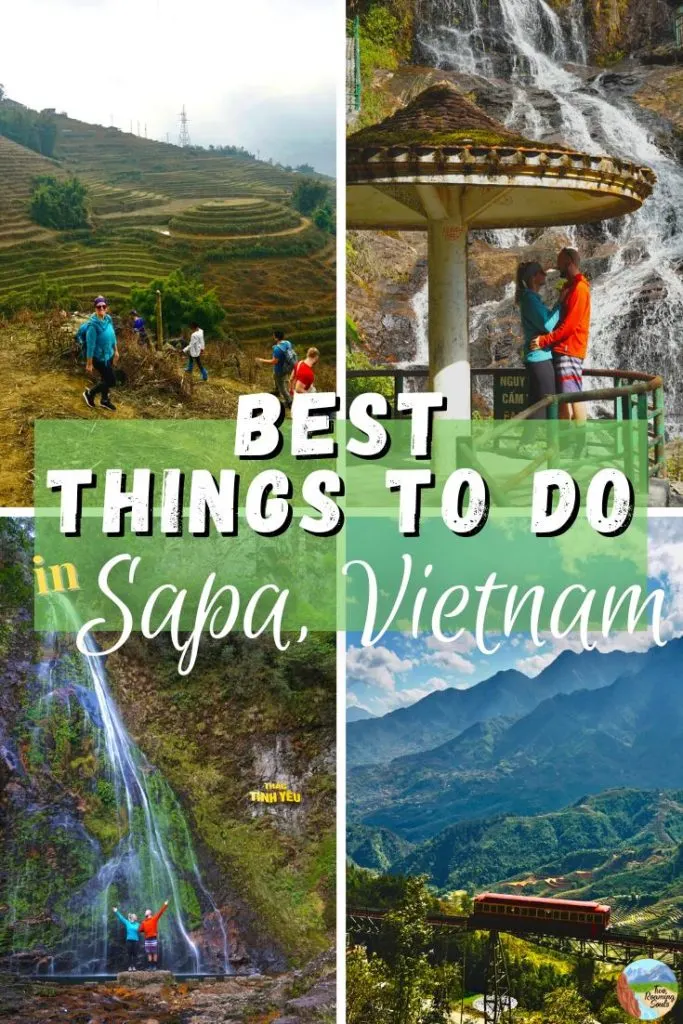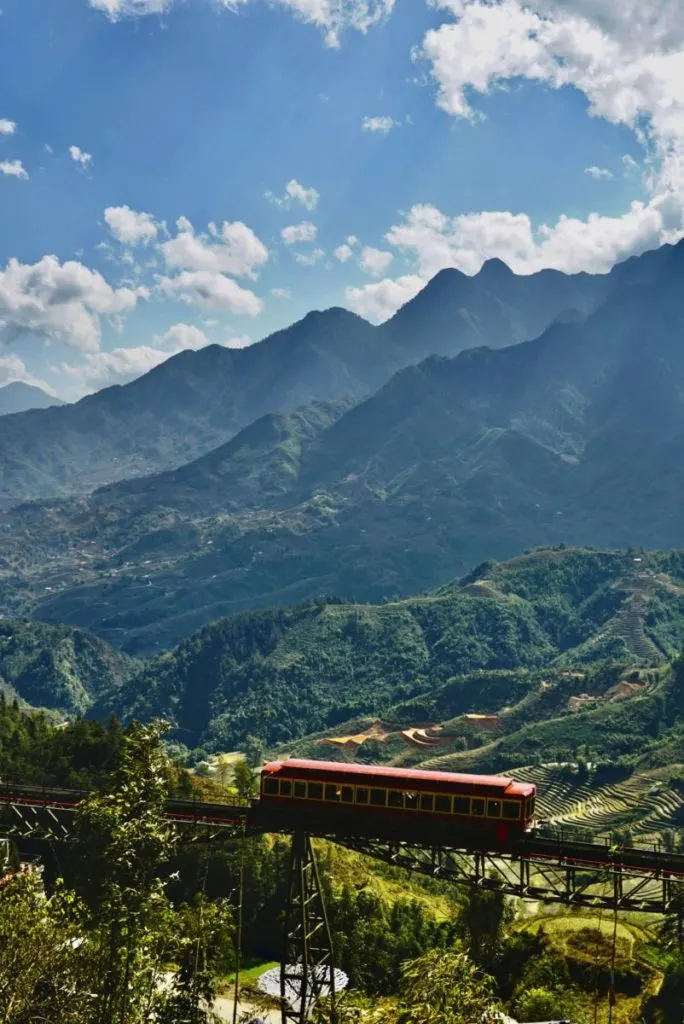
There are certain places that I get extra giddy writing about and Sapa Vietnam is one of them. When we told locals we were headed to Sapa for 5 days, they turned their heads and were like “huh”? Why?
But as soon as we arrived our jaws dropped and we were immediately mesmerized by the mountains. We even visited in the non-peak season. So we can only imagine how much more beautiful it gets in the summertime.
Sapa is a beautiful mountain town in Northern Vietnam. But admittedly we are very adventurous travelers who love mountains. So Sapa Vietnam is a perfect destination for us.
Most of the rice fields are not in production during this winter season (December-February). It is often “burn season” for farmers, so there was a haze in the sky from smoke at times.
Their winter is a bit different than one we might expect in Colorado. We visited Sapa Vietnam mid-January but the valleys were still green. Maybe not bright green like during peak season, but still stunning nonetheless.
In this guide, we will go over the best things to do in Sapa Vietnam so you can have the best time while you visit.
Quick Note (for reference, we visited in January 2023, so prices might change)
VND = the Vietnamese Dong (Vietnam Currency)
This post may contain affiliate links. Disclosure policy.
How To Get to Sapa Vietnam (Bus, Overnight Train, Taxi)
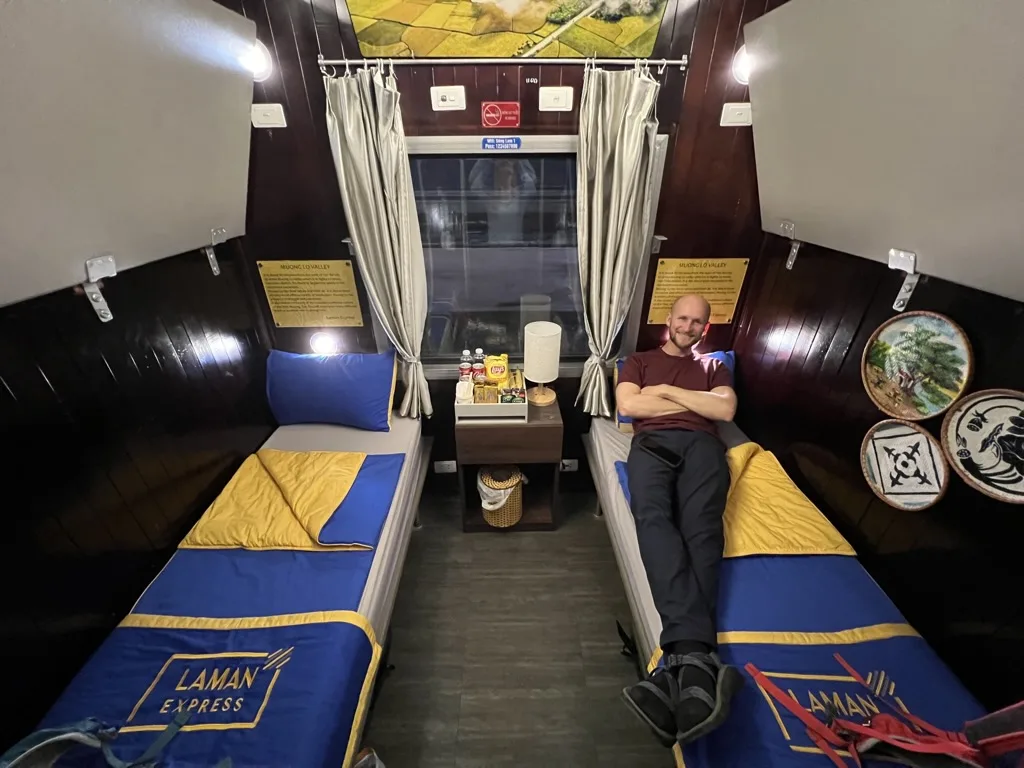
There is no airport that can bring you to Sapa, therefore it can only be reached by road or railway. So the most popular options for getting to Sapa, Vietnam are by bus, train, or private taxi.
Most of these modes of transportation will leave or pass through Hanoi, Vietnam. The drive is around 197 miles (317km). With no stops, the drive would take around 5 1/2 hrs, but from our experience, it will likely take much longer.
Taking A Bus from Hanoi to Sapa, Vietnam
Taking a bus to Sapa used to be a less-popular choice, but in 2014 Lao Cai highway opened making the trip to Sapa much faster. Plus it is also the cheapest option for getting to Sapa. You can buy a bus ticket for as little as $15 per person.
There are typically 2 options, a day trip leaving in the morning and an overnight bus. The bus will likely drop you off at the bus station and you will need to walk or taxi to your hotel.
In our opinion, the bus is a much bumpier ride and the bus driver stops multiple times for bathroom and smoke breaks. The sleeper bus typically has slightly inclined seats. And with the curvy roads, some people have a harder time sleeping on the bus.
Taking A Train From Hanoi to Sapa, Vietnam
Jake and I took an overnight train and honestly had a great experience. But we did book our own cabin which was more expensive than buying a single berth (bed) in a 4-6 berth cabin and sharing it with strangers.
The train leaves from the Hanoi Railway Station (Ga Hà Nội) and will bring you to Sapa Town (Ga Lào Cai). From there you will need to get another taxi to the mountains (about 45 min), unless you plan to just stay in the town. But for the beautiful scenery, you will likely want to travel up into the mountains.
The train ticket cost for our own private berth was $3,520,000 VND ($148 USD) total for the both of us. Sure it’s pretty expensive, but you can cut the price in half by just sharing the cabin with other people.
We felt that we would sleep better if we had a private cabin. And the overnight train saved us from having to book a hotel that night. And we didn’t lose a day of our vacation to traveling.
The train ride was about 8 hours long which gave us almost a full night’s sleep. And we arrived in Sapa rested and ready to explore right away.
A great platform to book an overnight train with is 12goasia.
Taking A Private Taxi to Sapa, Vietnam
Lastly, you can always hire a private taxi to get to Sapa, Vietnam. This will likely be the fastest route, but it will cost quite a bit more than the other two transportation methods.
We always found it easy and reliable to book a private taxi with Viator.
What To Do In Sapa Vietnam:
Trekking Tour of Muong Hoa Valley
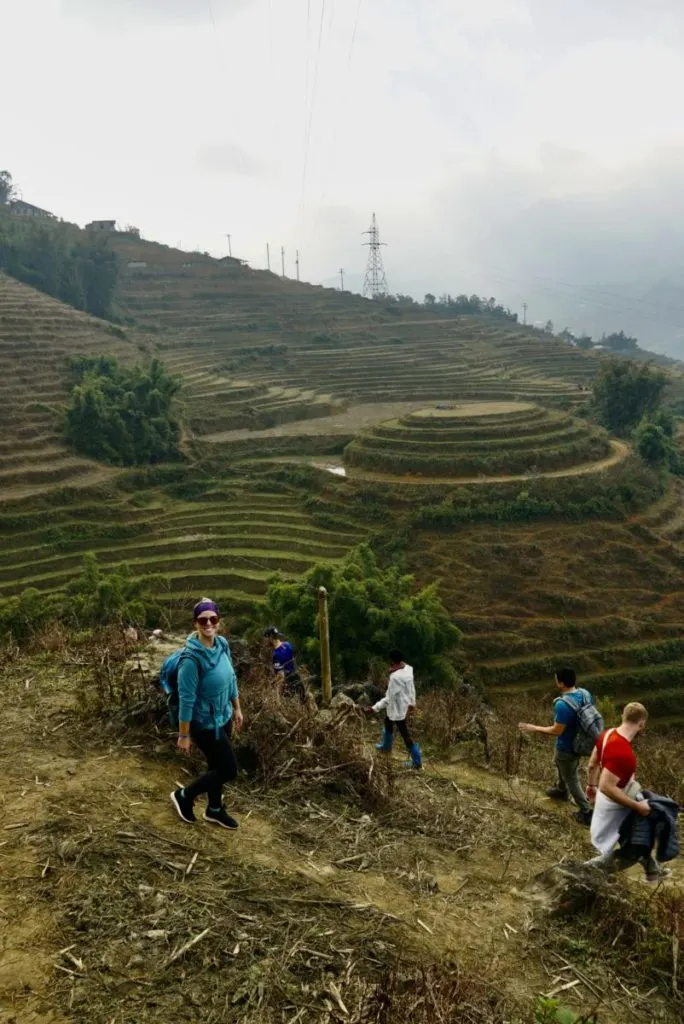
One of the most popular things to do in Sapa, Vietnam is a trekking tour of the Muong Hoa Valley. This mountain valley has rice terraces that Sapa is famous for.
This area is home to the Hmong people, an ethnic minority group, separate from both the Chinese and Vietnamese people.
This ethnic group has their own language, customs, and way of life. They are even shorter than Vietnamese people, and always have a smile on. But despite their size, the Hmong people are masters of rice terrace farming in mountainous terrain.
Booking a trekking tour can be done with your hotel or hostel. They will be able to set you up with the right tour guides. Or you can always book with Get Your Guide or Viator, which will also set you up with a local guide in the area.
But really it’s not too hard to find a tour by just walking around town. The Muong Ethnic groups are very persistent in trying to sell you on tours and their handmade products.
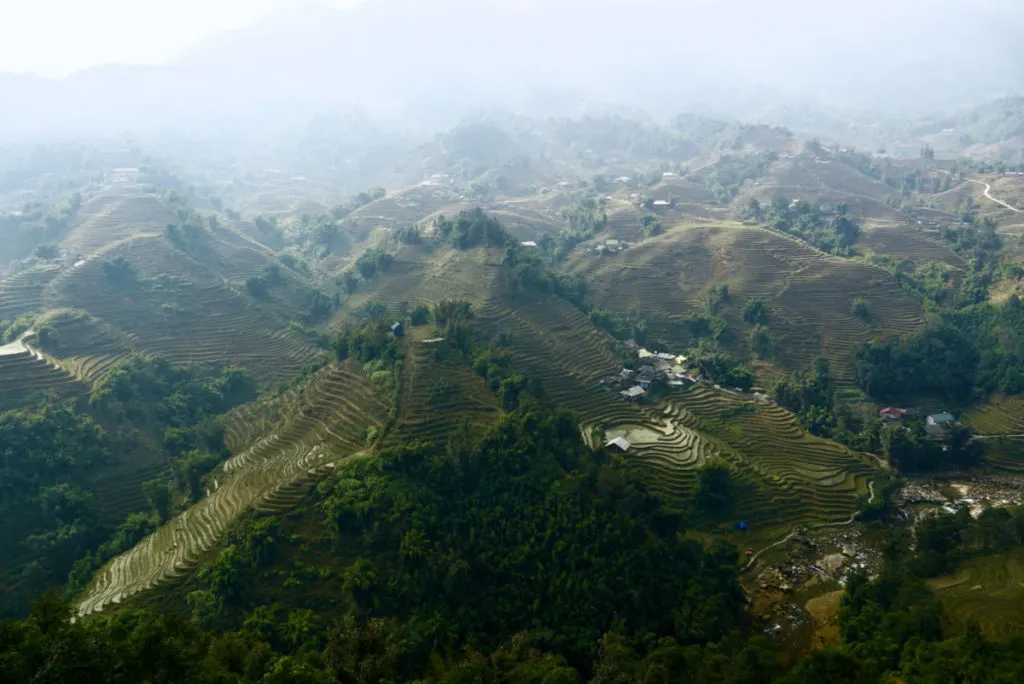
There are two different tours you can choose, a group tour or a private tour. The reason why it is good to set up a tour with your hotel or hostel is the tour guide will often pick you up, set up transportation, or start the trek right from your hotel.
The tour starts off by walking through the rice terraces. It’s a good idea to have shoes and clothes that you aren’t afraid to get a little muddy. Our hostel offered boots to anyone who didn’t want to get their feet wet. (I had one misstep and got my shoe super muddy right at the beginning).
You will then hike through many different local villages, with local shops and many different stunning viewpoints. The tour guides will brief you on the history of the land and share interesting facts along the trek.
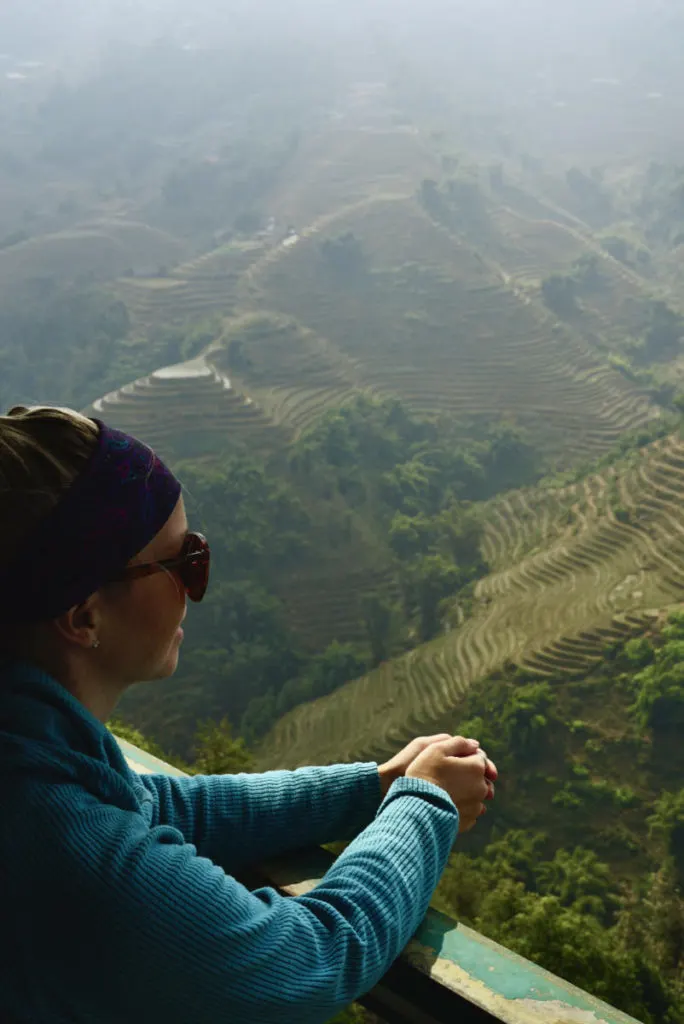
In the early afternoon, the guide will bring you down to the valley floor into a local village to visit some local souvenir shops and indulge in some local food.
There will be many opportunities to support the locals and pick up local handmade crafts. The Muong people are known for weaving colorful patterned textiles. Everything from blankets and scarves, to headbands and ceremonial outfits.
If these souvenirs are of interest and you don’t find exactly the right pattern, don’t worry, there is no shortage of the Hmoung People roaming around trying to sell these goods.
Fansipan Mountain:
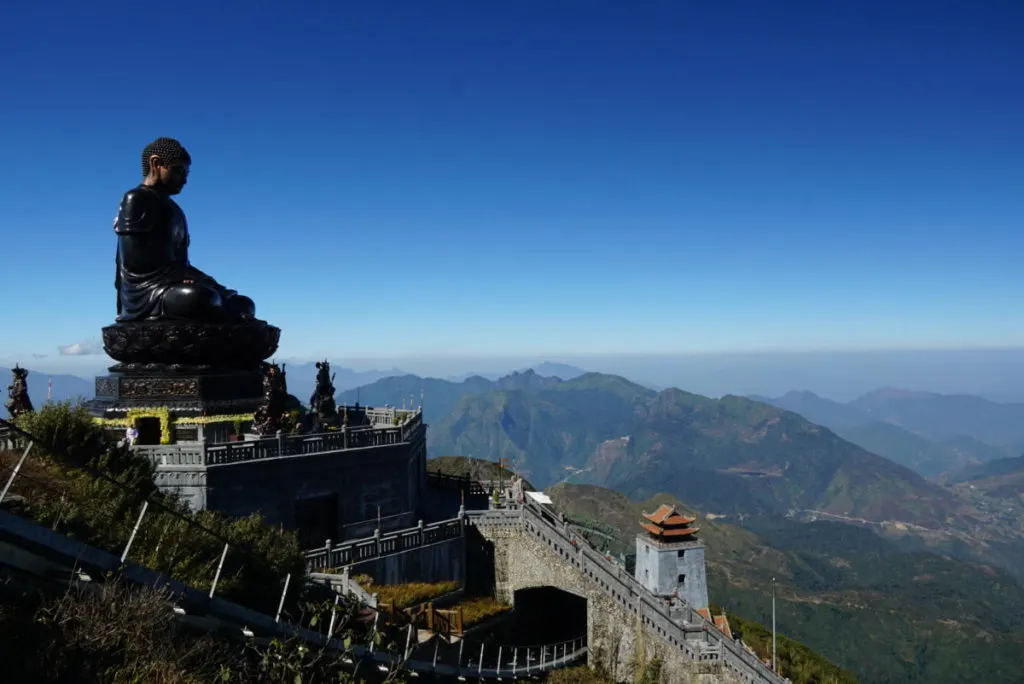
Soaring to the highest peak in Vietnam is the summit of Fansipan Mountain. The summit stands 10,326 ft (3,147 m) high. It is nicknamed to be “the Roof of Indochina” because it is the highest mountain of the Indochinese Peninsula (containing Vietnam, Laos, and Cambodia).
The journey to the top of Mount Fansipan is an adventure in itself. Most tourists will start at Sapa Funicular Station and ride the tram to Muong Hoa Funicular Station. Cost is 150k VND ($6.39 USD) roundtrip.
From here you will hop on a scenic cable car (gondola) from Hoang Lien Cable Car Station to the Fansipan Cable Car Station. The cost is 800k VND ($34.07 USD) roundtrip.
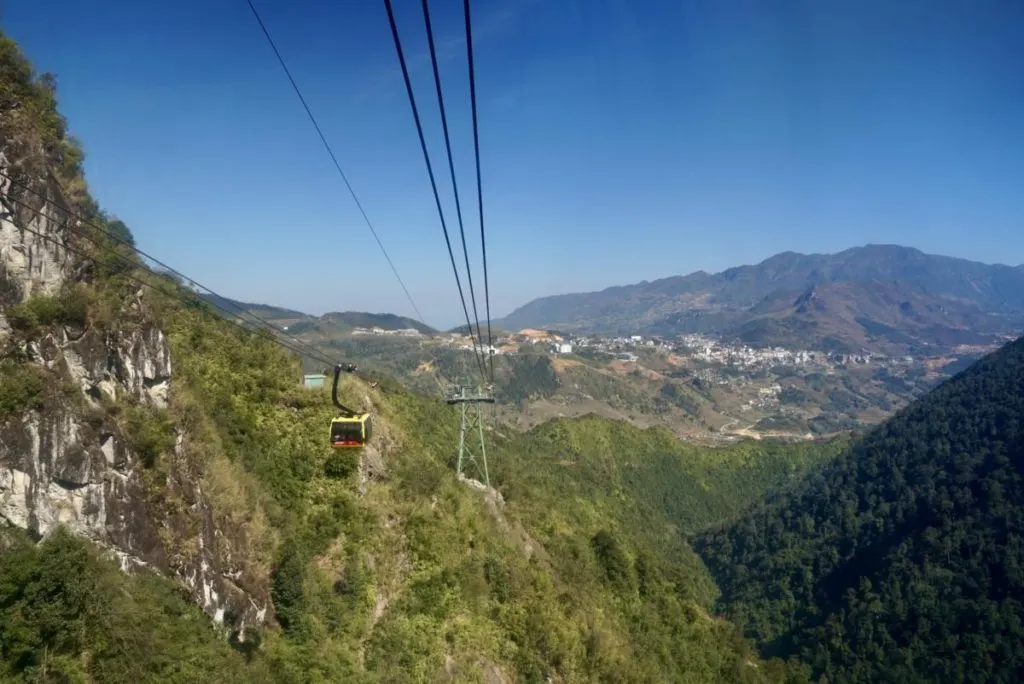
Fun Fact: the cable car holds a Guinness World Record for the greatest height difference between the departure and arrival terminal of 4626 ft (1,410 m).
Tourists can choose to walk to the summit from here or hop on one last tram to nearly the top. The last tram takes you from Do Quen Funicular Station to Truc May Funicular Station. Cost is 150k VND ($6.39 USD) on the way up and 120k VND ($5.11 USD) on the way down.
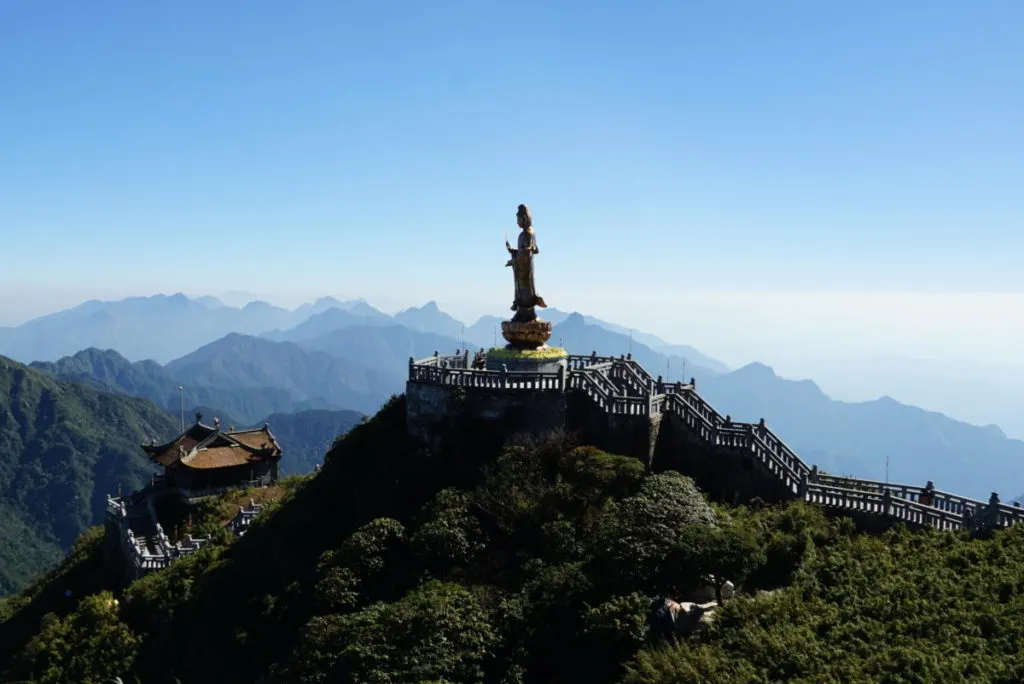
The hike from Fansipan Cable Car Station to the summit of Fansipan Mountain is a short .3 mile (.48km) hike, but it’s a steep 340 ft (103m) climb. Be ready to climb tons of stairs to reach the top!
Trekking To Fansipan Mountain:
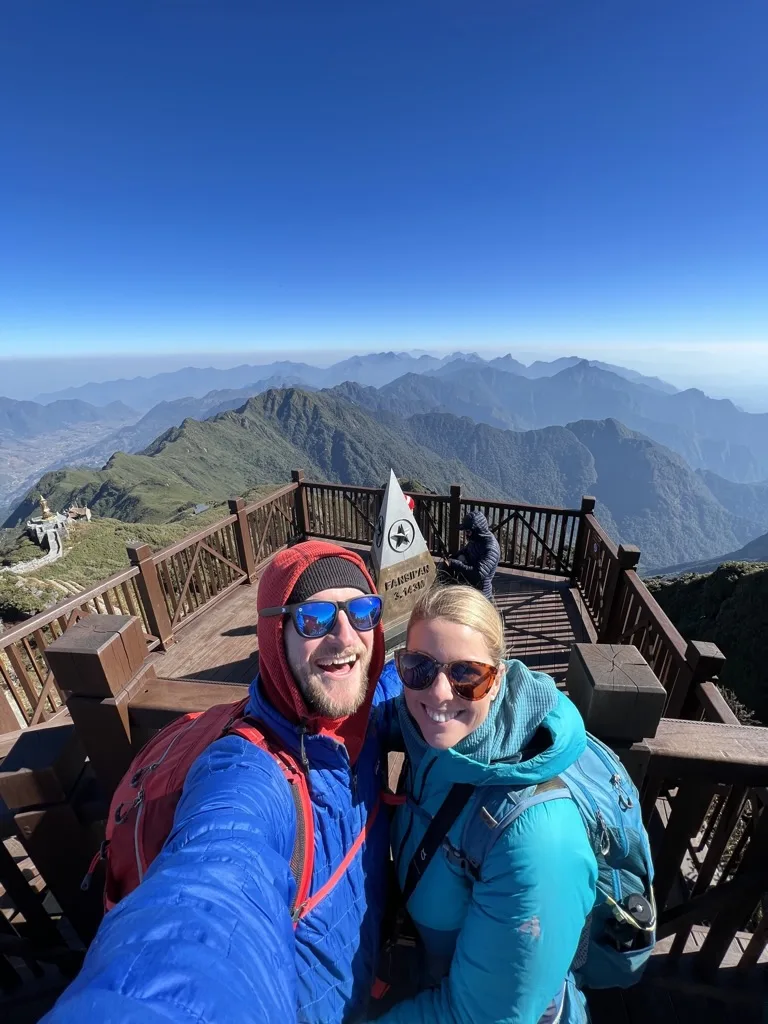
There is the option of trekking to the top of Fansipan Mountain without taking the tram and cable car. The hike is 5.2 miles (8.4 km) one-way and a straight-up climb 4,320 ft (1317 m). The hike will be challenging for even the most fit and experienced hikers.
Guides are required for the trek up to the summit of Fansipan Mountain. Many people have stated that they have tried to do the hike without a guide, but a guard has stopped them.
Again, you can book a tour guide through your hotel or hostel. Or you can book a trek through Get Your Guide or Viator.
Many tourists will do the trek up, but ride the cable car and tram back into town. Otherwise, the hike will be 10.4 miles (16.7 m) round trip.
Tram Ton Pass Sapa:
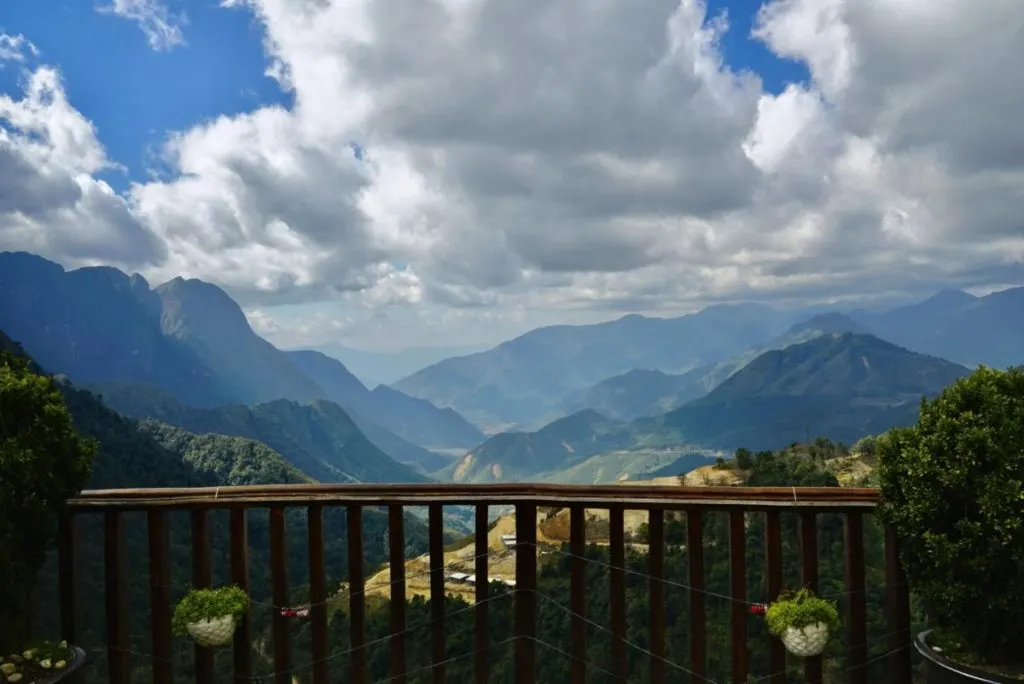
A fun day tour in Sa Pa Vietnam is to explore the sights and attractions of Tram Ton Pass. There are a few different ways people can experience this road and plenty of unique attractions along the route.
Personally, Jake and I didn’t have much experience driving a motorbike. So we opted for a private Taxi. I believe it was 800k VND ($34.07 USD) for a private hire.
But a common way tourists experience the Tram Ton Pass is by renting motorbikes and driving this scenic route. A motorbike rental is around 100k VND ($4.32 USD). The road is well-paved, but with many steep curves, some motorbike experience is recommended. And bad weather might be another reason to opt for the taxi.
Tram Ton Pass Itinerary:
Silver Waterfall:
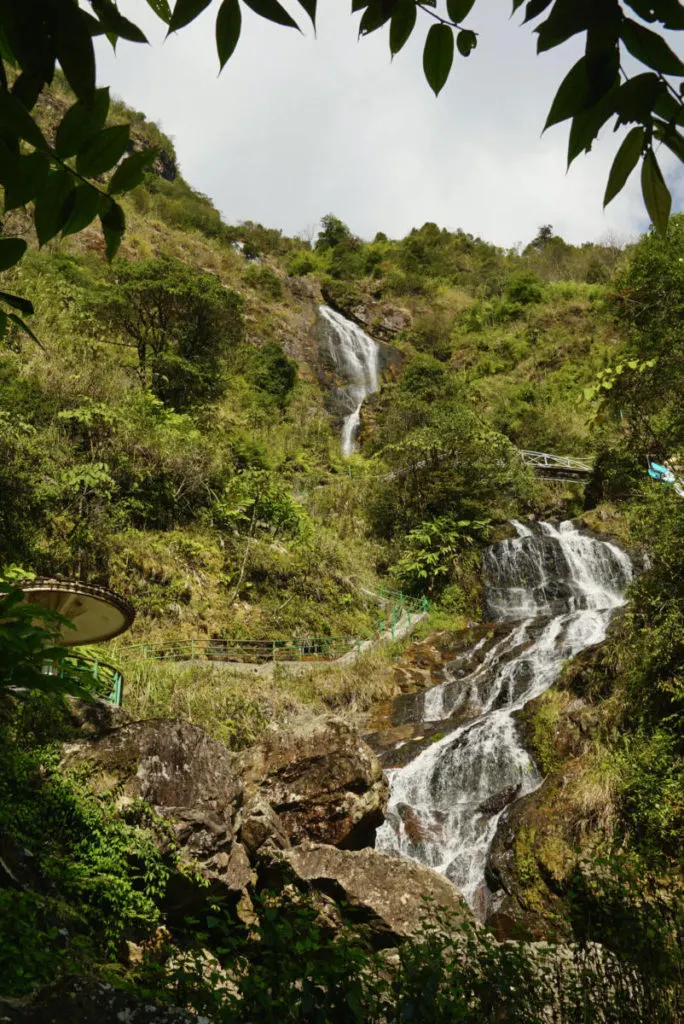
The first stop on the Tram Ton Pass is Silver Waterfall. This is an easy roadside waterfall that is a short .25-mile hike that climbs 135 ft. The hike loops up and over the waterfall and offers a few different spectacular views of the waterfall.
Silver Waterfall stands about 565 ft (200m) tall and flows into the Muong Hoa stream.
The cost for entrance is 20,000 VND ($0.84 USD).
Love Waterfall:
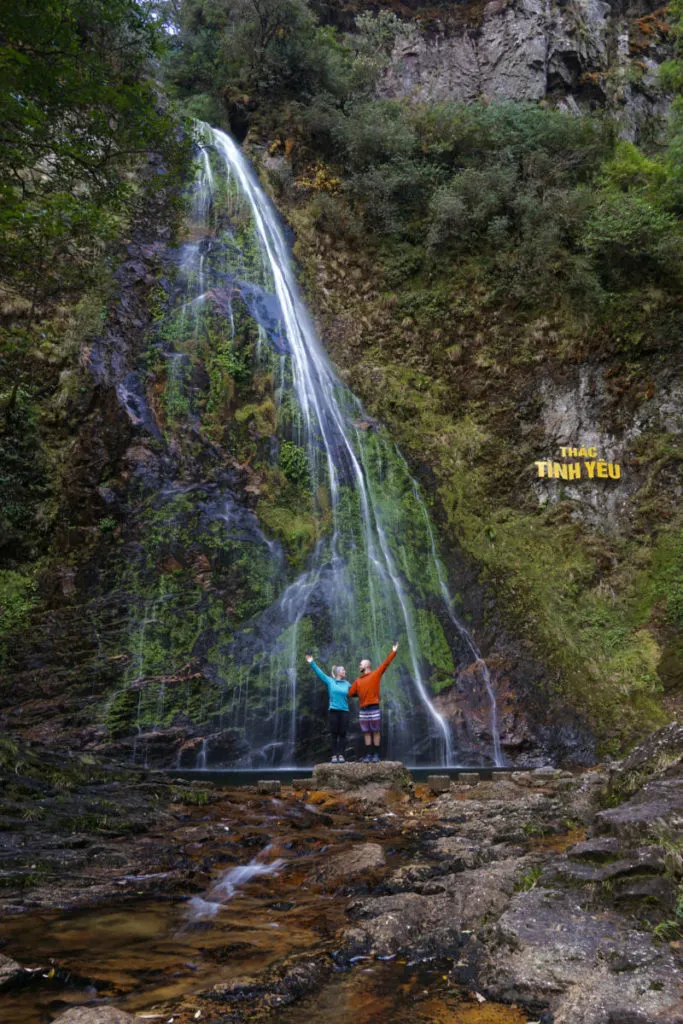
An awesome hike on the Tram Ton Pass is Love Waterfall. The hike is a moderate 1.3 miles with 377 ft elevation gain.
The hike is beautiful and follows a paved path the whole route. Once you reach the creek, you will cross it via stepping stones and follow along the creek until you reach a set of stairs. From here, after climbing the stairs you run into the stunning flow called Love Waterfall.
Love Waterfall stands 328 ft (100m) high and has a light wispy flow down the rocks and moss.
The cost for Love Waterfall is 70k VND ($3 USD) per person.
Glass Bridge:
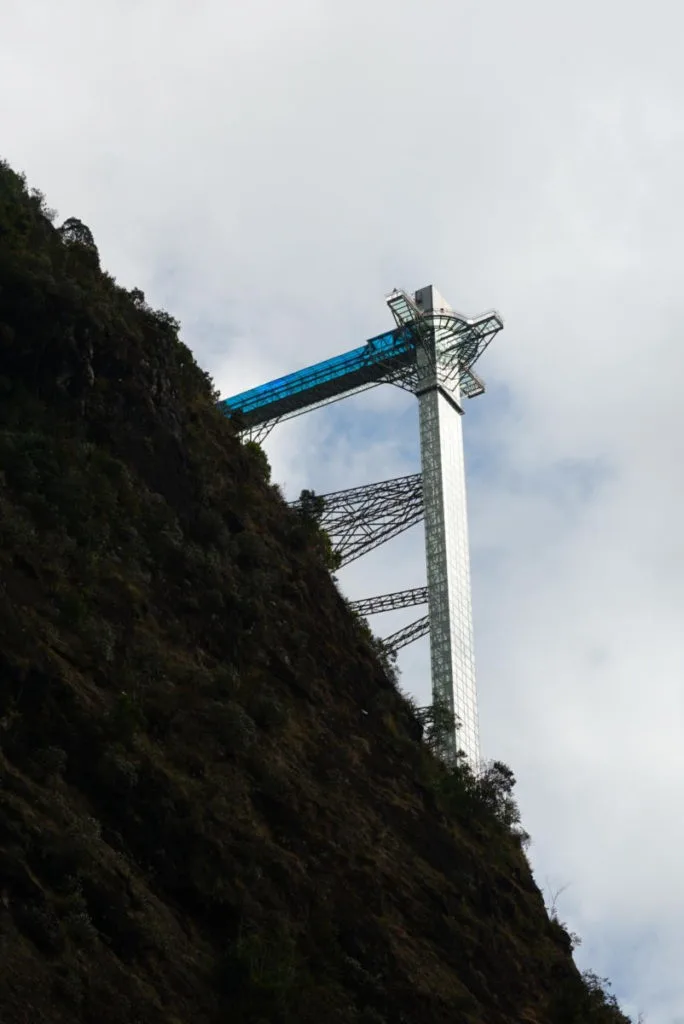
For adrenaline seekers, the Glass Bridge at the top of O Quy Ho Pass might be the perfect stop for you.
An elevator will bring you all the way up to the bridge, where you can make the brave walk on the glass bridge.
The bridge stands 196.8 ft tall and 16.4’ ft wide with 7 cm of glass between you and a free drop to the ground. But don’t worry, it is safe to walk on!
The cost is a bit steep at 400,000 VND ($16 USD) per person.
Heaven’s Gate:
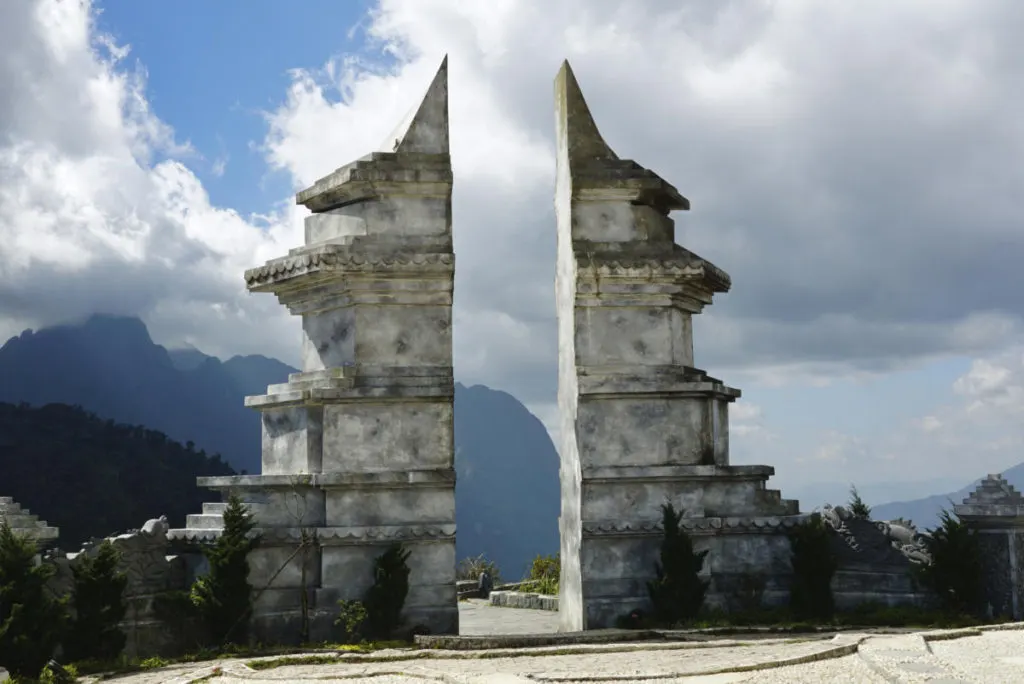
Another tourist attraction along the Tram Ton Pass is Sapa Heaven Gate (O Quy Ho). This area has one of the best views down the valley for miles (weather dependent, of course).
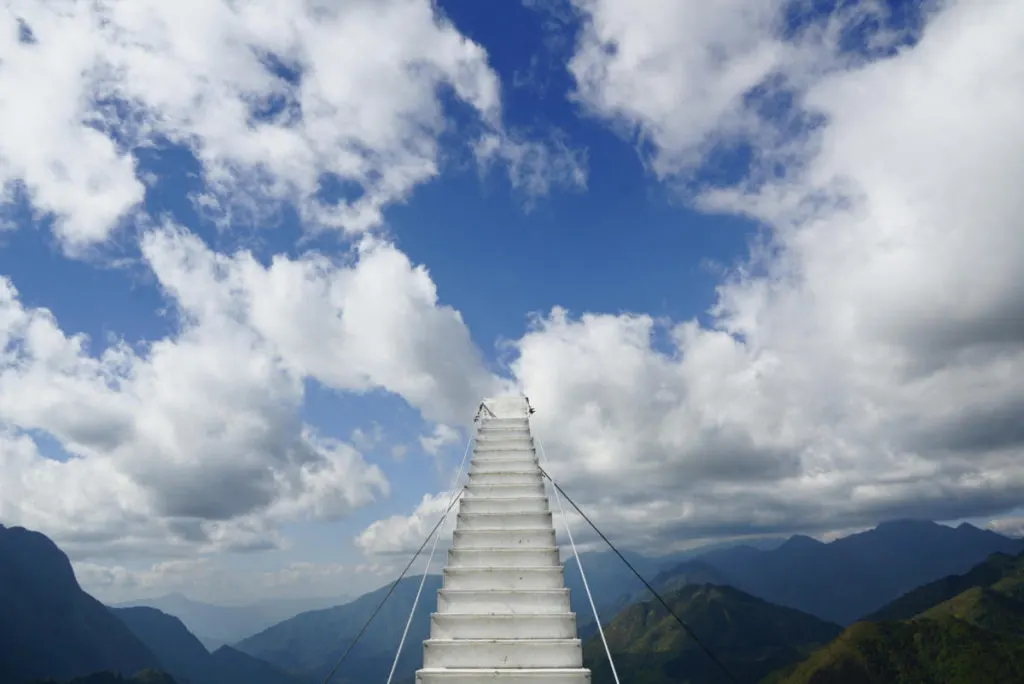
There were also a ton of unique places to snap a photo. There was a “stairway to heaven” which can be super sketchy in the wind. Many different hearts to sit in and a gate with an open view to the valley. But personally, it felt a little tacky as just a place for people to take prop-style Instagram pictures.
The cost is 120,000 VND ($5 USD) per person. If you are just coming for the view, you should skip going inside the paid park and just stop roadside somewhere else.
Walk Around The City Center:
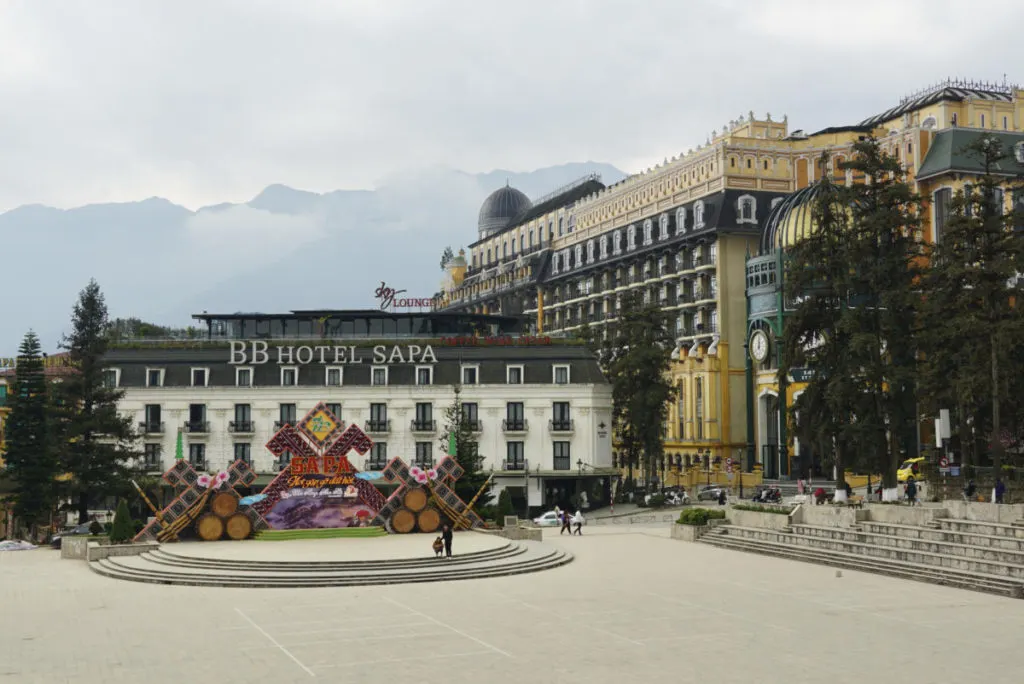
One of my favorite things Jake and I did in Sapa was just walking around the City Center. There are TONS of great restaurants, local shops, and a beautiful walk around the pond. It also looks like they might have events in the center of town. Check Sapa Tourism for more up-to-date info about events.
Plus there was a local market on the south side of the pond. The world is your oyster.
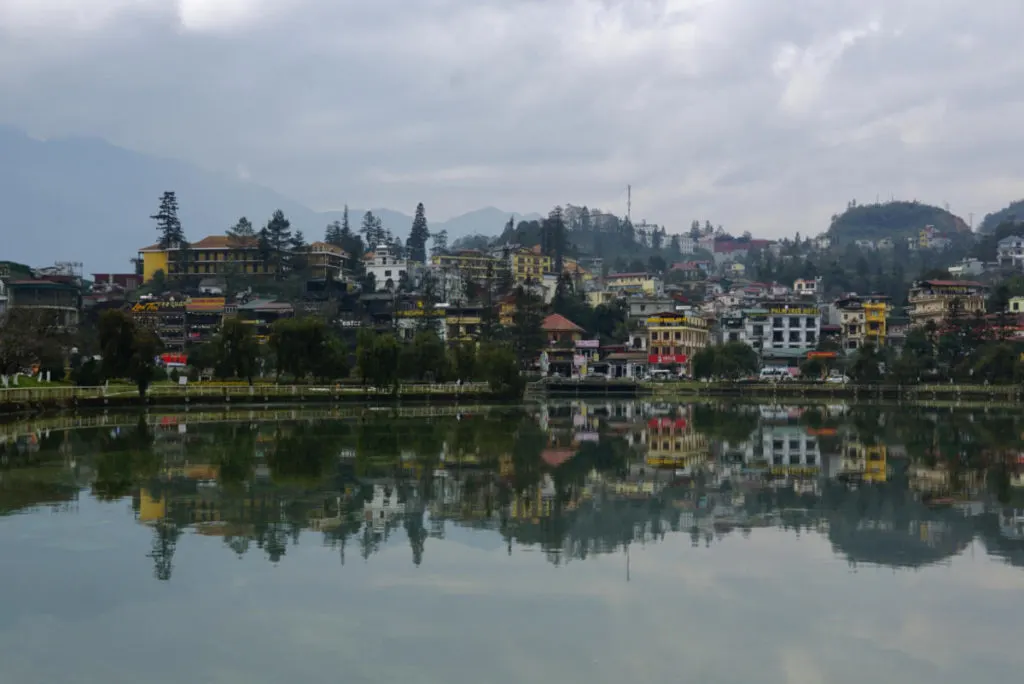
Some personal favorites in Sapa Town were:
- Sapa Sky View Restaurant & Bar (Insane views, a bit more up-scale, but good food and drink)
- Delta Italian Restaurant (great pizza and pasta if you’re craving Italian!)
- Tag Beer (had a great selection of craft beers, which is hard to find in Asia)
- Mây Cafe (good latte, very spicy Bahn Mi Sandwich)
- Quảng Trường Hồ Sa Pa (nice scenic walk around the pond)
- Saparis Eatery & Cocktail Bar (delicious cocktails)
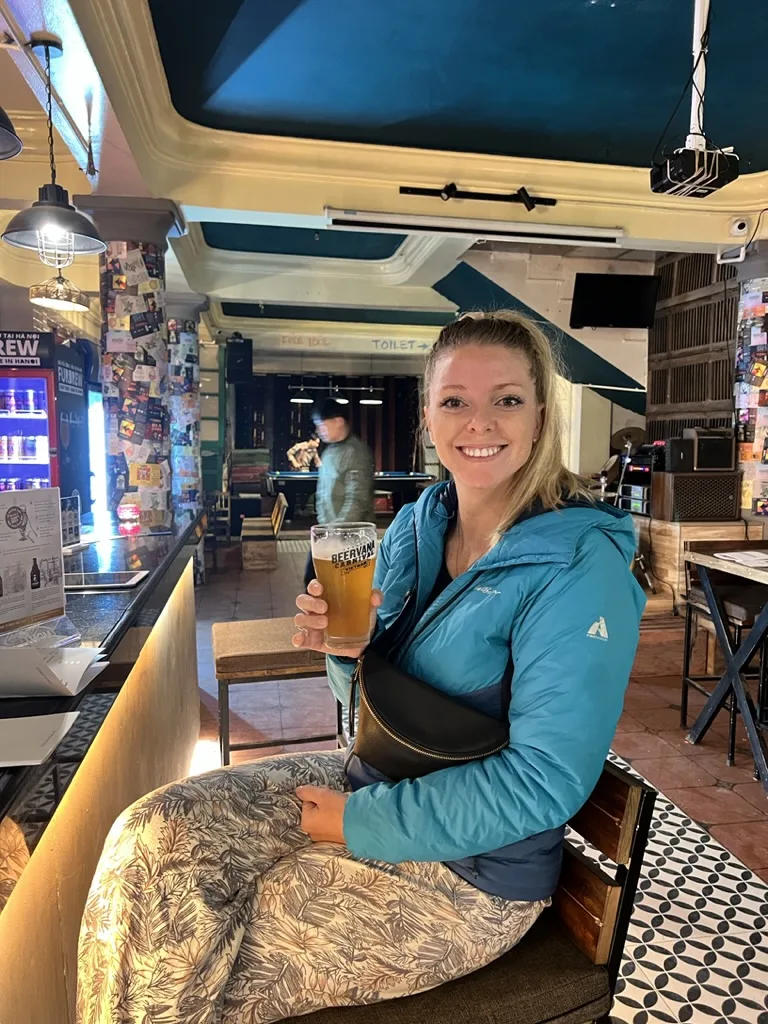
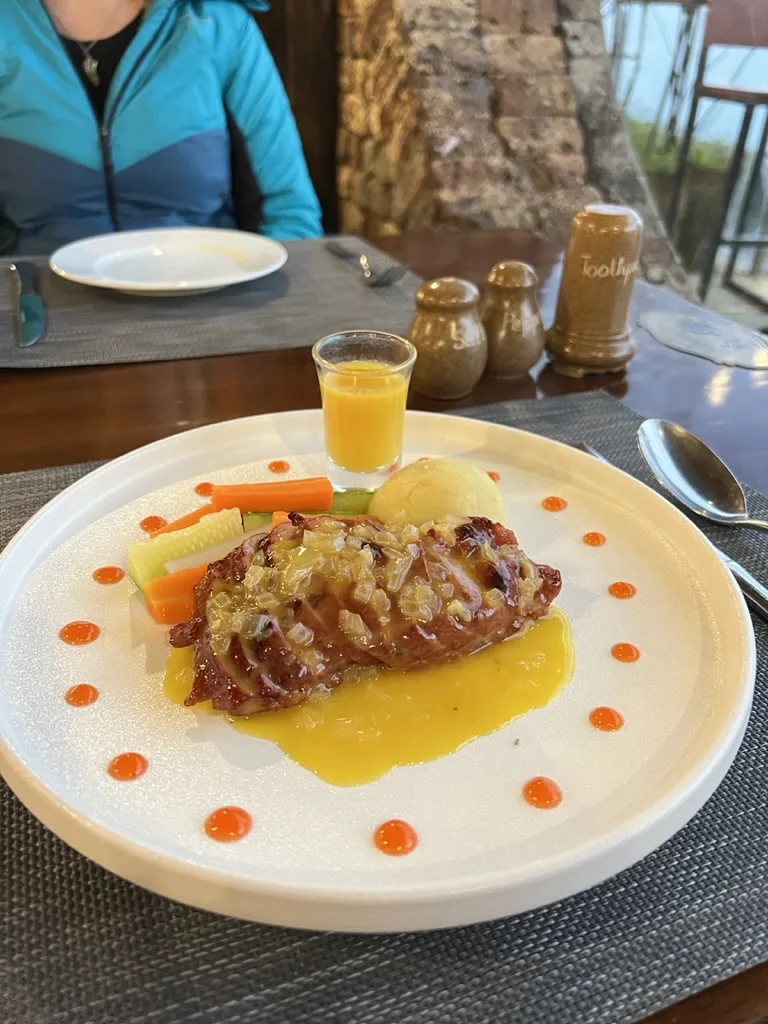
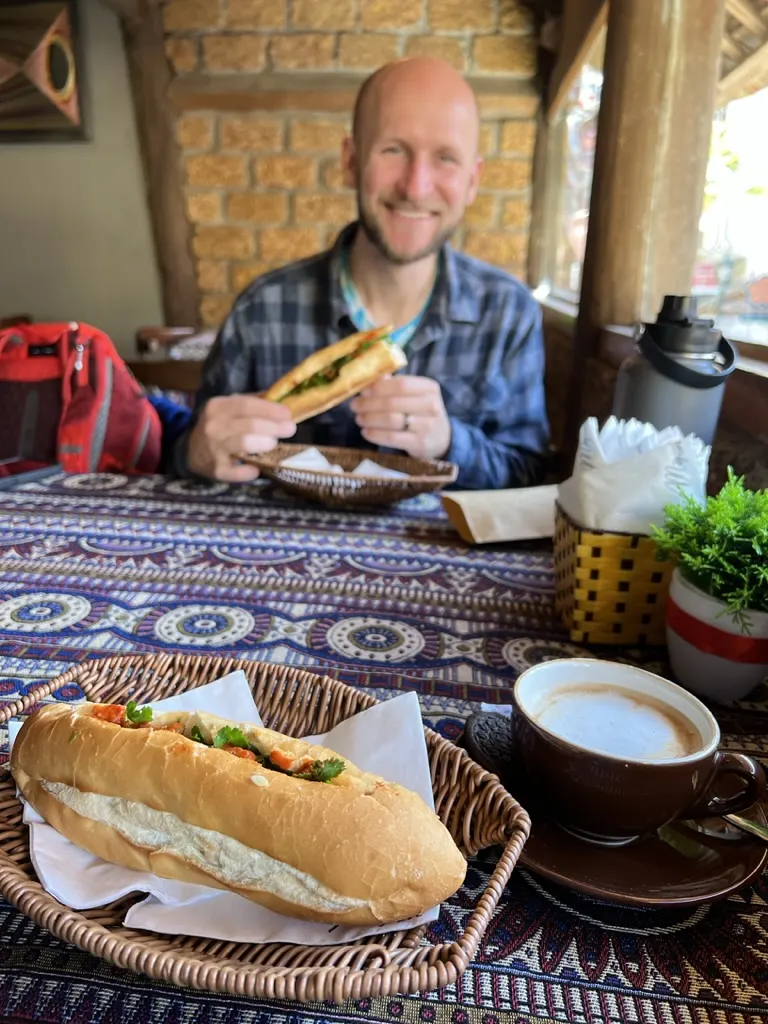
There are seriously sooooo many different restaurants and things to do around Sapa Town. So simply just look around and if you see something that looks good, give it a try!
Where To Stay in Sapa, Vietnam:

There are tons of places to stay in Sapa, Vietnam. The town is actually pretty walkable, so if you stay anywhere near the city center, you will have access to much of the town.
Personally, we LOVED Mega View Homestay in the south part of town. We got lucky with the top corner room and the view was epic! So I will suggest this stay for nearly anyone. They even have shared rooms with bunks, so if you are traveling on a budget, don’t even hesitate to stay here!
We met the owners various times throughout our stay and they were always welcoming and accommodating.
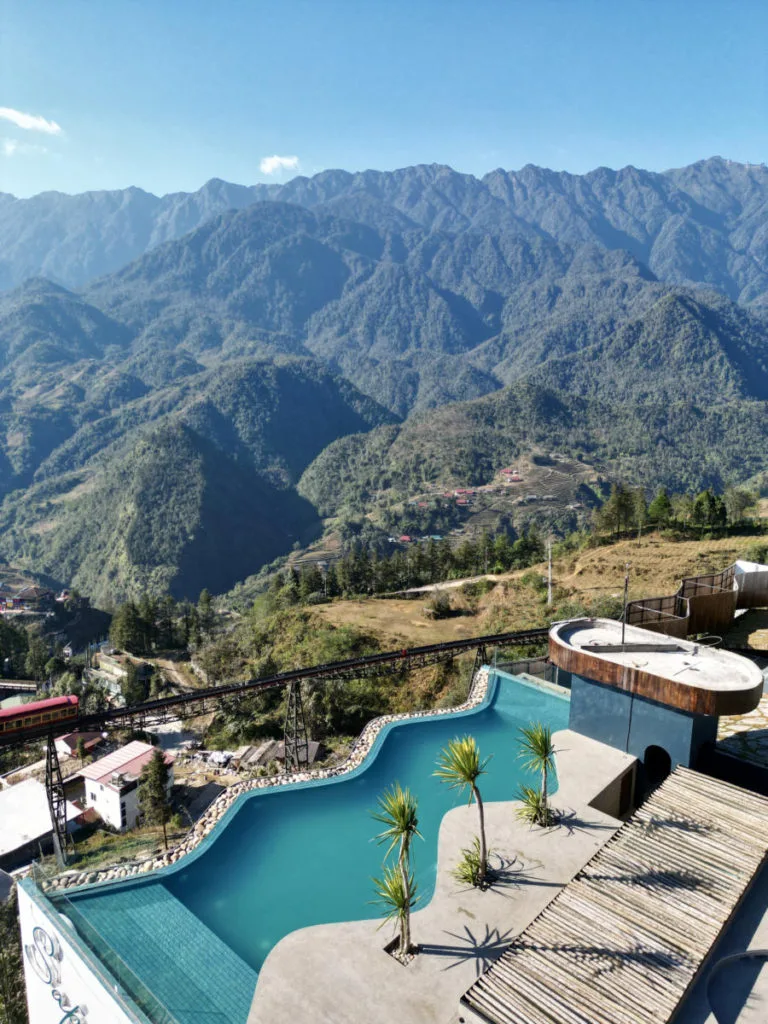
Additionally, we stayed at Viettrekking Sapa. While the weather did not permit, there was a pool on the rooftop with epic views. It was close to the Sapa Funicular Station. Plus it had a delicious cafe downstairs, so you could always start your morning off right. Breakfast was also included.
If you choose Vietrekking Sapa, we wouldn’t suggest the “Standard Room” because there were no true windows. Choose a mountain view room!
Use this helpful map to find other hotels and vacation rentals in Sapa.
If you are trying to have the most authentic experience, you can try to find a local homestay with the Muong people. These are often found in small villages outside of the city and offer a closer experience with the local culture.
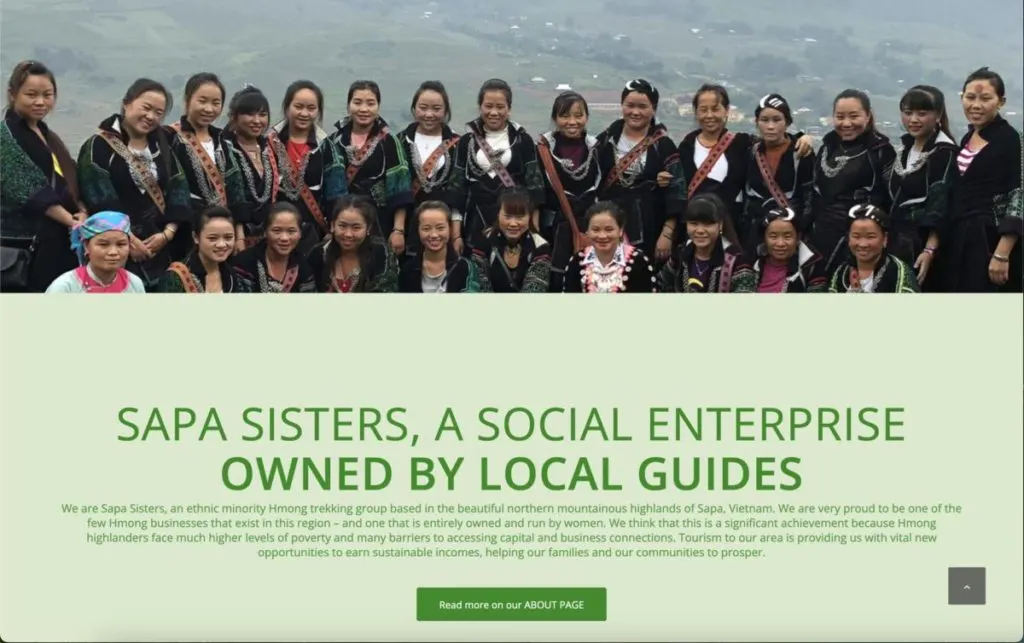
The most highly recommended experience is with Sapa Sisters. It’s a business entirely owned and operated by Moung women. It’s one of the best ways to have your money benefit the local people.
Or another great option is staying with a local family at Cat Cat Homestay in Cat Cat Village.
When Is The Best Time To Visit Sapa Vietnam
Overall, the best time to visit Sapa is during Spring (March to May) and Fall (September to November). But you can still get lucky in the middle of winter with milder climates.
Rainy season is from May until September. The summer months of June, July, and August have the highest chance for heavier rainfall.
Ultimately, the best month to visit Sapa, Vietnam is September, because the rice paddies are lush and green, but the rain has since dissipated.
How Many Days in Sapa, Vietnam?
In general, the more days you spend in a place the more you get to explore.
I’d say you need 2 full days minimum to experience Sapa. But I’d suggest staying 4 full days in Sapa if you can stretch it.
Also, Sa Pa is not that easy of a location to get to. So you might as well stay for a few extra days to enjoy the peaceful beauty of the mountains.
Ideal Itinerary for Sapa Vietnam
- Overnight bus or train to Sapa
- Day 1: Explore the city center (check out different restaurants, local markets, etc)
- Day 2: Trekking tour of the Muong Hoa Valley
- Day 3: Summit Fansipan Mountain
- Day 4: Tram Ton Pass
- Overnight train or bus back to Hanoi
Takeaway | Sapa Vietnam
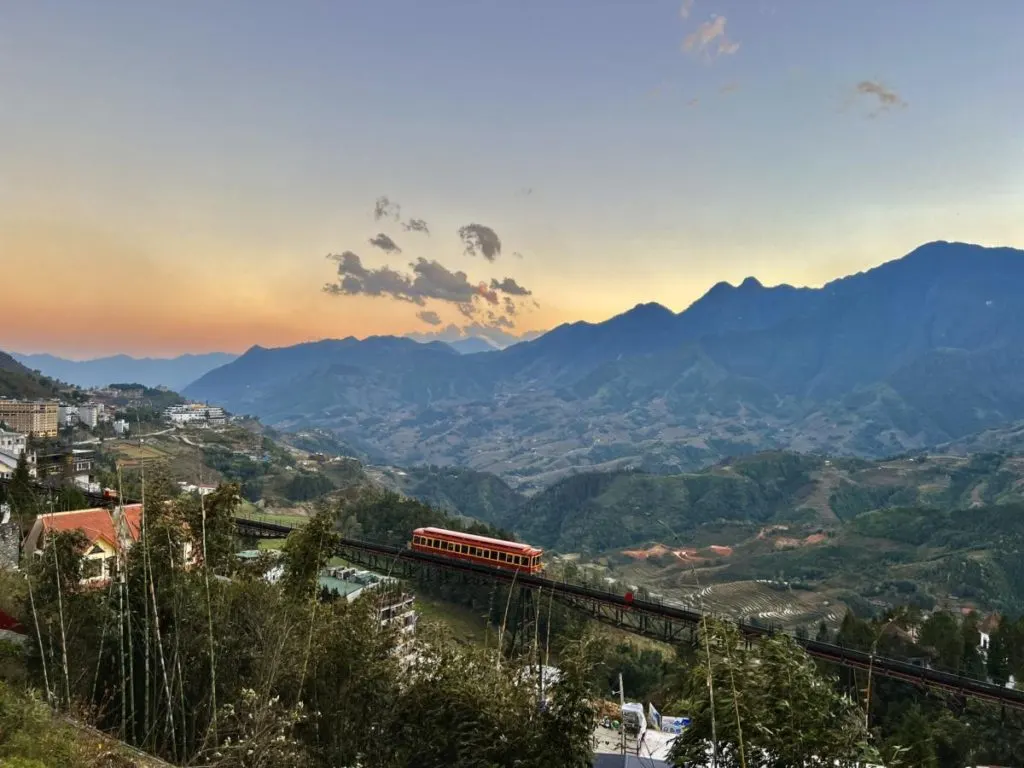
Sapa Vietnam is my favorite place in Vietnam. We just thoroughly enjoyed the vibe, and felt like there was tons to do.
Whether it be just walking downtown, trying great restaurants, or being whisked by cable car up to the tallest peak in Vietnam. There are breathtaking landscapes nearly everywhere you look. If you are mountain lover, then visiting Sapa Vietnam is a must!
Save This Post For Later
